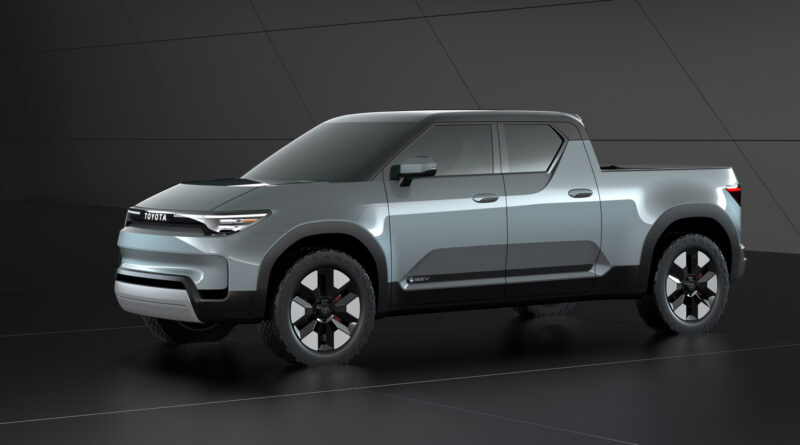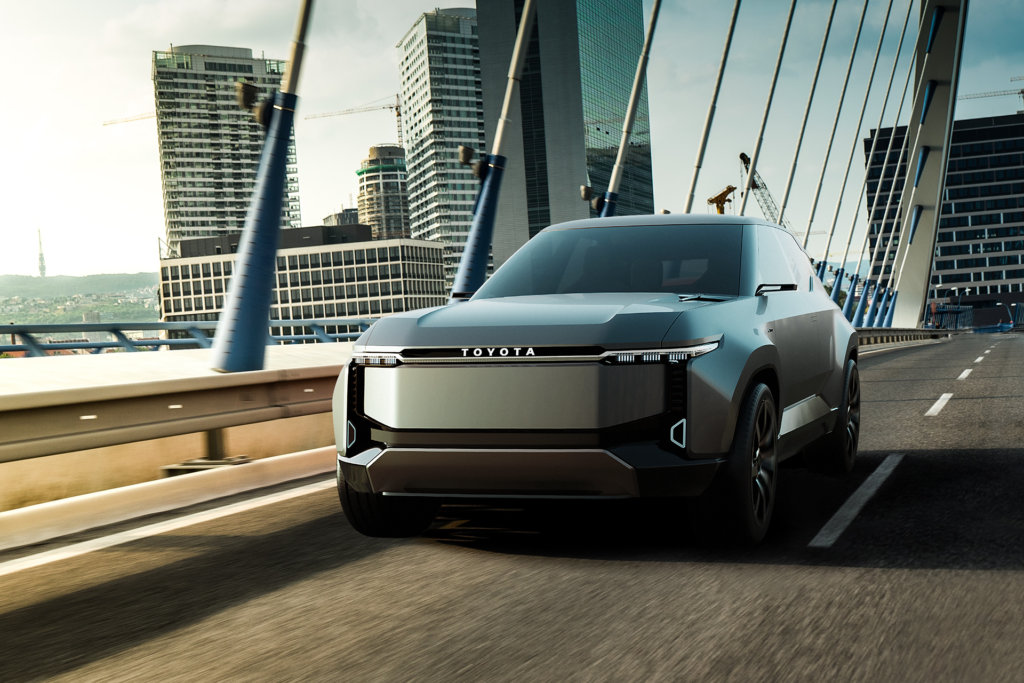
Toyota locks in futuristic electric HiLux and LandCruiser for 2026 Europe debut – but will battery-powered ute and rugged SUV make it to Australia?
Toyota has confirmed plans to introduce two high-profile battery-electric models in Europe by the end of 2026: a dual-cab ute and a large SUV that appear likely to wear the HiLux and LandCruiser nameplates. The automaker released only silhouette teasers, leaving several details – and an Australian launch – unresolved. If approved for our market, both vehicles could reach Australian showrooms in 2027.
Design lineage and the concept versions
The dual-cab silhouette closely resembles the 2023 EPU pickup concept revealed at the Tokyo Mobility Show, while the larger SUV mirrors the 2023 all-electric LandCruiser Se concept, also shown in Tokyo. Toyota Europe’s announcement referenced a trio of new SUVs (including a mystery model) alongside the two teased vehicles as part of a pledge to introduce six new EVs to Europe by the end of 2026. The package also includes the Urban Cruiser, a facelifted bZ4X and a new C-HR+ small SUV.
Naming and market strategy
Toyota Europe says it will move away from its bZ naming convention and return to more familiar, traditional nameplates to make new EVs instantly recognisable to customers. That strongly suggests the large SUV will carry the LandCruiser badge and the dual-cab will be badged HiLux. Toyota Australia has not yet confirmed either vehicle, but local senior figures have previously indicated interest: in 2023 Toyota Australia’s sales and marketing chief Sean Hanley described the LandCruiser Se production version as having an “extremely good” chance of being sold here.
Two utes – not the same HiLux
Complicating matters, Toyota is already developing a separate HiLux derivative aimed at South-East Asian markets that’s based on the current ladder-frame model. The Europe-bound dual-cab appears to be a different, monocoque-based vehicle derived from the EPU concept, so it may serve a distinct customer segment and face different engineering and market considerations for Australia.
Structure, capability and likely trade-offs
Both the EPU-based ute and the LandCruiser Se are built on car-like monocoque architectures rather than traditional ladder frames. For a ute buyer that typically means superior on-road ride and refinement but comparatively lower towing and payload capacity versus heavy-duty ladder-frame rivals such as the Isuzu D-Max and Ford Ranger. In short, expect the electric HiLux to prioritise comfort and tech over brute worksite towing numbers.
Key dimensions and interior cues
At Tokyo, the EPU measured 5,070 mm long, 1,910 mm wide and 1,710 mm tall, with a 3,350 mm wheelbase – dimensions comparable to compact global utes (the Toyota’s wheelbase is notably long). The LandCruiser Se concept was 5,150 mm long, 1,990 mm wide, 1,705 mm tall with a 3,050 mm wheelbase, making it some 135 mm longer and 245 mm lower than the LandCruiser 300, and offering a 200 mm longer wheelbase. Both concepts favoured a sweeping, modern interior: the EPU’s yoke-style steering is expected to be replaced for production, but its shelf-like dash and large panoramic dual-screen infotainment and instrument cluster are likely to survive.

On- and off-road expectations for the LandCruiser Se
Although based on a monocoque platform, Toyota has signalled the LandCruiser Se will be engineered to retain strong off-road capability. Its long wheelbase and advanced suspension tuning should deliver a level of ride and handling refinement uncommon in the LandCruiser lineage, while still offering competent off-road performance – positioning it as a more refined, driven SUV rather than a pure heavy-duty 4×4.
What now for Australia?
Toyota’s European rollout will be closely watched here. Further teasers and technical reveals are likely through 2025 and into 2026 ahead of the European sales launch. Australia’s right-hand-drive market and local expectations around towing, payload and serviceability will be central to Toyota Australia’s decision-making. If Toyota opts to bring these models here, expect them to arrive in 2027.
Conclusion
Toyota’s European EV offensive – which appears set to include monocoque-based electric versions of the HiLux and LandCruiser – marks a clear shift toward electrifying familiar nameplates. For Australian buyers, the critical questions will be capability and positioning: will these EVs meet the towing and load demands of traditional ute and 4×4 customers, or are they aimed more at lifestyle buyers seeking refinement and tech? While the LandCruiser Se seems designed to preserve off-road credibility, the monocoque HiLux is likely to trade some payload and towing grunt for comfort and technology. With a European launch slated for 2026, Australian confirmation should follow in due course – and if approved, we can reasonably expect the pair in local dealerships in 2027.
About EV Evolution
EV Evolution is the leading online platform dedicated to Australian electric vehicle owners and enthusiasts. We foster a vibrant community, delivering essential EV news and insights, and enhancing user engagement through our innovative, AI-powered chatbot for dynamic discussions. Our mission is to empower Australian electric vehicle owners and enthusiasts by fostering a vibrant, AI-driven online community that connects, informs, and advances the nation’s electric vehicle landscape: Toyota locks-in futuristic electric HiLux and LandCruiser EV for 2026 debut in Europe, but will battery-powered ute and rugged SUV make in Down Under?




